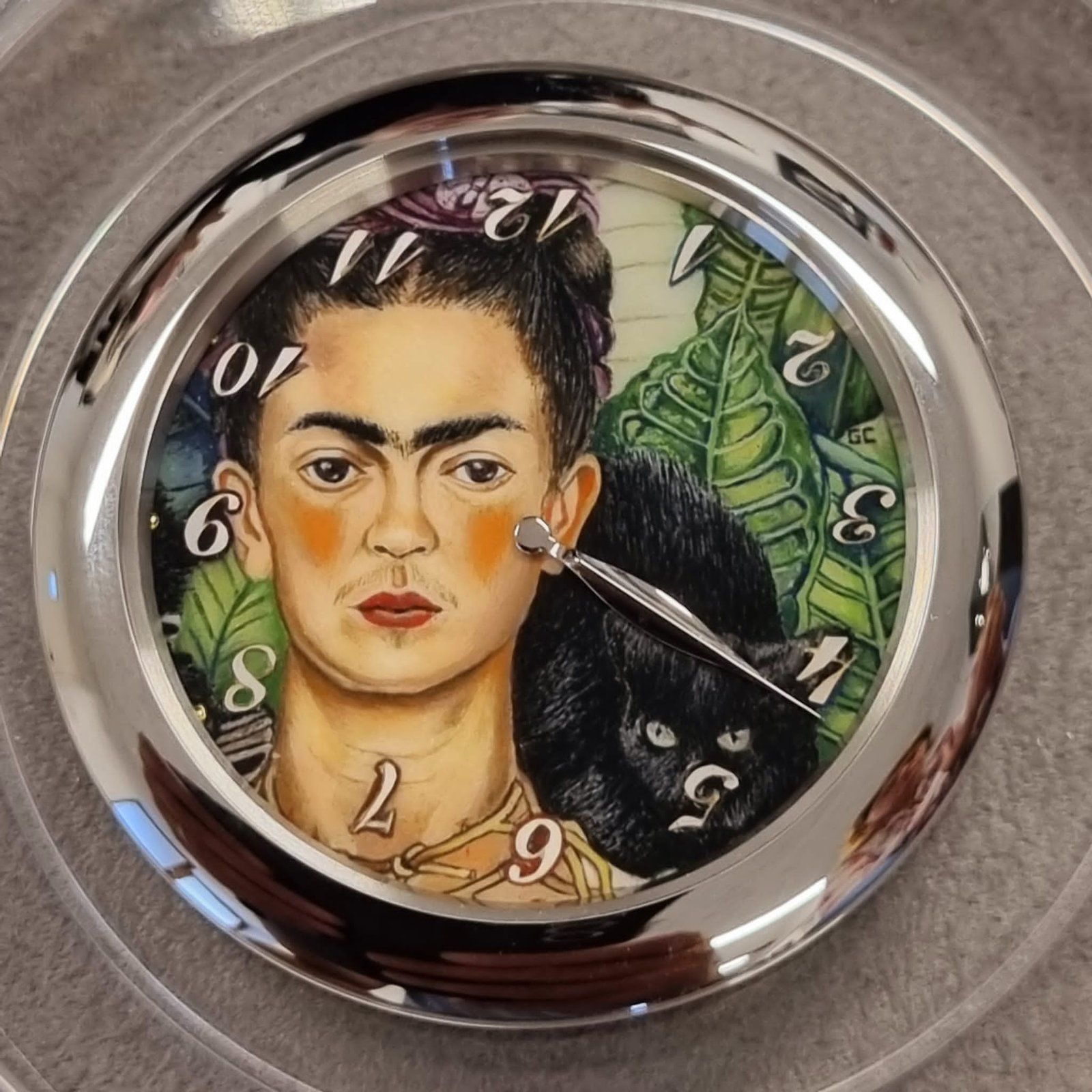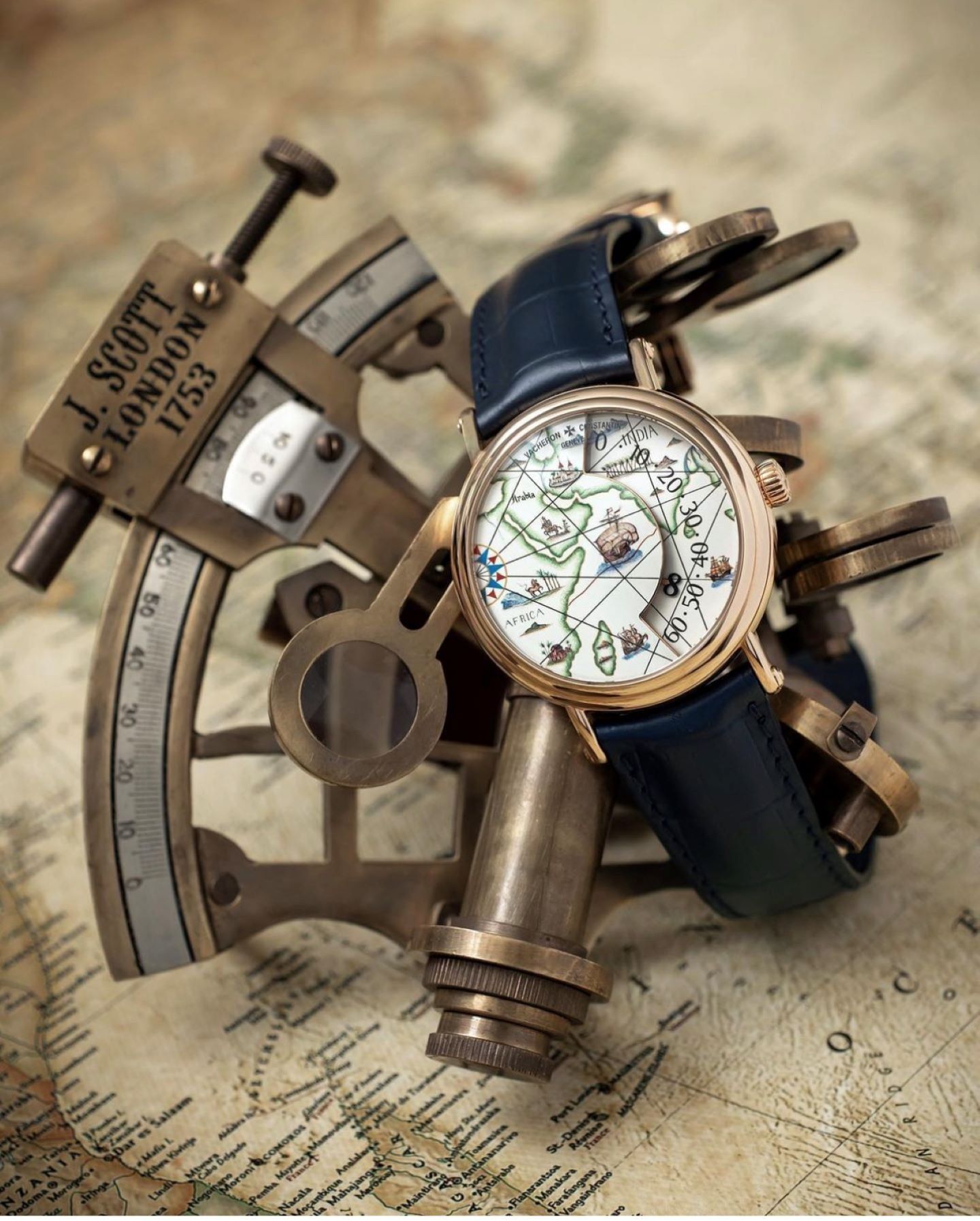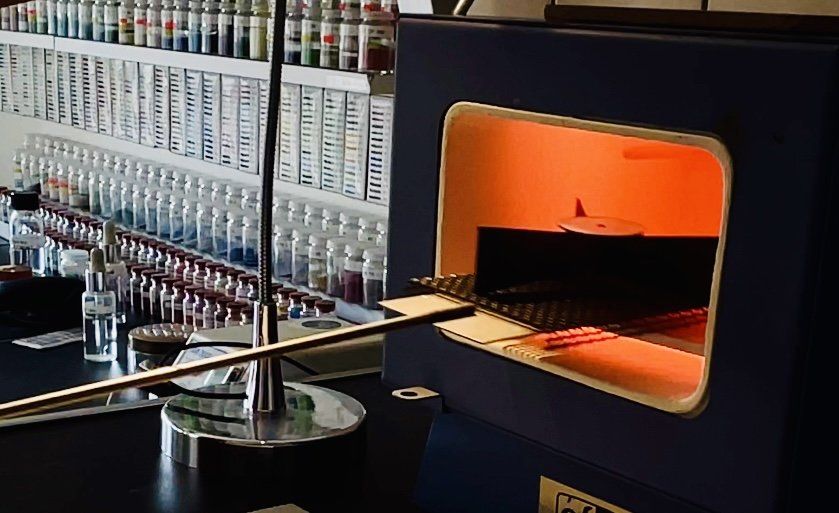In Conversation With: Gabriel Colliard As He Takes Us Into The World Of Enameling
What does it take to be a watch enameler? From manual skills, such as dexterity, rigor, discipline, and the ability to work in small areas and in the other creative skills, where he would be able to create his own projects using drawing and painting. We caught up with enameler Gabriel Colliard to explore the world of enameling.

THM: How did you become interested in the art of enameling? What made you pursue this career?
Gabriel: I am a painter. With a degree in painting in fine arts from the National University of Cordoba in Argentina, my dream was to live art and be able to closely appreciate the works of the great masters of universal painting in art museums in Europe.
In 2003, and with the help of my dual nationality, I moved to Geneva, Switzerland to realize it. Living from art was not and is not always easy, so in the land of watches I decided to reinvent myself, and as I was a manual worker, why not try to work in the field of polishing in watchmaking? After training I landed a job at Rolex, which allowed me to enter the watchmaking world. In the year 2008, due to the economic crisis, I was without a job. It was this opportunity for me to find the link between these two fascinating worlds, that of art and that of watchmaking through enamel. Following two training courses, a CAP in Limoges “Art enameler on metals” and another as a Graphic Designer in Geneva I took this extraordinary journey.

THM: Enamelling is an ancient technique. Is it so common today? Why do you think it has endured and how has it evolved over time?
Gabriel: Enamel is an age-old technique that has its roots in the origins of humanity and has survived the centuries until today without interruption. In watchmaking, it has been used since the 16th century. Then it disappeared between the 1970s and 2000s. It was once a commonly practiced art before other industrial methods of mass production and the insatiable quest for maximum profit took over. However, despite periods of prosperity or decline, it is an art that is constantly being renovated. Since the beginning of our century and thanks to certain watchmaking houses and a few passionate collectors, enamel has reappeared with intensity. Today, all the major luxury watchmaking houses incorporate or have produced enameled pieces in their collections of exceptional pieces.

THM: You work with “Grand Feu” enamel. How are the different enamel powders applied and fired?
Gabriel: The application of the enamel can be done wet or dry, with spatulas, sieves, or brushes. In luxury watchmaking, enamel is applied with small brushes and mixed with distilled water as an agglutinate. It is used practically only on gold, which can be white or yellow. The application should be as uniform and homogeneous as possible. I apply a back coat on the other side to avoid possible deformation of the support. it is applied using small brushes in thin layers. The piece with the enamel is therefore placed in the oven, already heated to around 800° C, and the piece is fired. The result should be shiny and uniform. There is something of the order of alchemy, of transformation in this process, because it is once the piece is released that we see the result of our work.
THM: You have mastered all enamel techniques. Do you have any preferences regarding these techniques?
Gabriel: As a creative, I love the versatility of visual arts and enamel, so I love them all. Each technique has its distinctive features. However, as a painter, miniature painting on enamel is the one that resonates most deeply with me through its pictorial and creative possibilities. Carried out using vitrifiable paints, carefully prepared and mixed beforehand, this method comes as close as possible to the essence of oil painting. By skillfully navigating between technical production and artistic approach, this approach offers the possibility of replicating the masterful works of the great masters, while also allowing the creation of original works, each detail being rendered with striking precision. In this universe of almost infinite nuances, the palette of expressions is truly limitless
Artists can employ a variety of brush techniques, including dots, short or long strokes, directional brushwork, or even impressionist-style dabs. Each technique yields unique and expressive results that reflect the artist's style.

THM: Enamel work is very complex with high demands in the field of watchmaking. How do you overcome problems such as cracks or flaking?
Gabriel: Enamel is a restrictive and capricious material. During the glazing process, air balls, cracks, or color burning in the oven may appear. There are also the constraints of the ribs and the metal to maintain the stability of the dial after the various passages in the oven. There are many problems that can appear during cooking. It is not the enameler who decides the final result of a piece, except that it is the enamel in complicity with the fire that has the last word. And to answer your question? With a lot of patience, perseverance, and the appropriate tools.

THM: How long does it take to enamel a dial?
Gabriel: Here is the great paradox. In a world where we are overwhelmed with emergencies, due to the insatiable quest for maximum profit, time is speeding up with shorter and shorter deadlines. And yet we need time, there are no miracles. The quality of an enameled piece will depend above all on the time we are going to devote to it. The artist is one of the only beings capable of devoting a lifetime to a single work of art, which leads to the conclusion that the value of time will depend on the interests and values of each human being. Today it is rare for a watch company to grant an enameler 2 or 3 months to make just one masterful piece in the miniature painting on enamel technique and yet it was the time that took the great master miniaturists in the past. For a glazed piece, the time spent will depend on several factors such as the size of the piece, the complexity of the pattern, the technique used, the drawings made beforehand, and the technical research, as well as the fundamental proofs and errors in this process. This is a huge challenge that enamellers face today, creating a beautiful enameled piece with quality requirements in a short time.

THM: What other challenges do you face as an enameler when working in such small spaces?
Gabriel: Succeed in giving a soul to each creation, a coherent and harmonious whole that will tell us a story, transmit an emotion, a feeling. A miniature work that will show us a deep value, make our dream and vibrate.
THM: The designs that you work on, are they imposed for clients or do you create your own unique designs?
Gabriel: Generally these are reasons imposed by customers with rare exceptions. It is the management of a watchmaking company that, along with the creative team, decides the reasons for a project. However, there are a few watch houses that grant great freedom to enamellers, such as Patek Philippe and the small brand XRby “The Art Watch” which honors its artisans with a unique concept of total creative freedom.

THM: How have digital printing and new technologies changed the enamel profession? Do you incorporate modern techniques or do you stick to traditional methods?
Gabriel: It is entirely possible to integrate modern techniques while remaining faithful to traditional methods, the two can coexist perfectly. One approach does not prevent the other and when this idea is truly integrated it will no longer make sense to arise. Enamel, like any art, is changing and evolving, and this is subject to the influence of human experience which adapts to the times.
After photography, computers brought a real revolution in art and also in design work. Personally, I use it by taking parts of different images or photographs that I cut out and look like in a photomontage. From this photomontage, I create my compositions and to finish I refine certain parts of the drawing.

With the laser for example, you can mattify the shiny surfaces of the enamel and even engrave it, as well as make a “wireless cloisonné” with clear contours without having a gold contour that will go around the shapes. It's sharper and cooler than these, we agree. However, they are tools that should not take the backseat to the sensitive and artistic work of the enameler, but that are used cautiously with insight. They can in certain cases and depending on the projects, be more innovative and differ in exceptional pieces.

Let's take the case of ovens. For example, far from the coal ovens that enamelers used in the past, today's vacuum ovens not only allow them to be used like traditional electric ovens but also with The vacuum function can be used to absorb the air that during the cooking process will reduce the size and reduce the air balls still present in the enamel.
THM: Speaking of finishes, what gives monochrome pieces such a smooth, shiny finish?
Gabriel: In the case of monochrome enamels on large surfaces, its rendering is obtained with new tools and polishing products, making it possible to obtain a regular, deep, and brilliant surface quality previously unknown.

THM: Why do you think enameled dials have seen a resurgence in recent times? What is it about the look that appeals to modern watch collectors?
Enamel, with its colors and shine, has found its home on watch dials because they share values in common, such as durability, longevity, and excellence.
THM: Where do you see the future of enameling going, both on watches and other mediums? Will it continue to grow in popularity?
Gabriel: Enamel can be used in different fields, such as art, utility and decorative objects, jewelry, goldsmithing, contemporary art, industry, and mural architecture. In Switzerland, it is appreciated for its brilliance which makes it unique, and used in watchmaking with which they share common values. Will enamel gain popularity in the future? without a doubt. We just have to note for example that a few years ago, there were very few enamelers in Switzerland. Today this quantity is only increasing and we can count more than 100. You just have to look at one of the professional social networks.

THM: If a watch enthusiast wants to try a DIY enamel process at home, could you suggest the steps for it?
Gabriel: First of all, be motivated. Love cooking with enamel, color, difficulty, and non-control. He must acquire some enamels, metal supports, and a kiln to live the wonderful experience of “Grand Feu” enamel.
Would you be interested in trying out an enameling process?
No articles found







